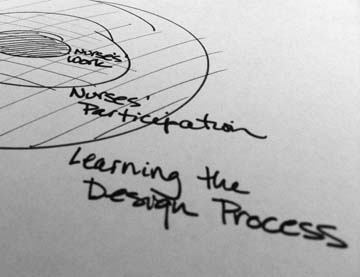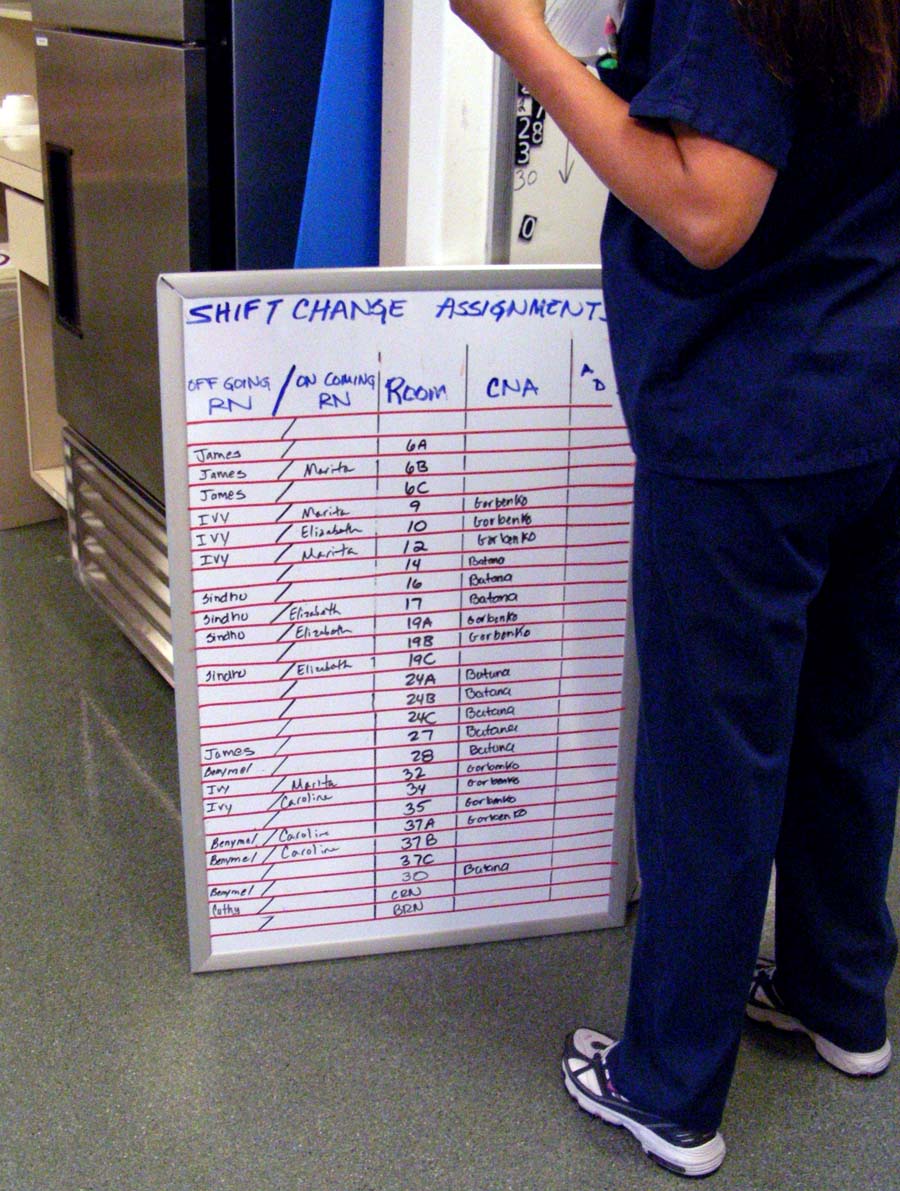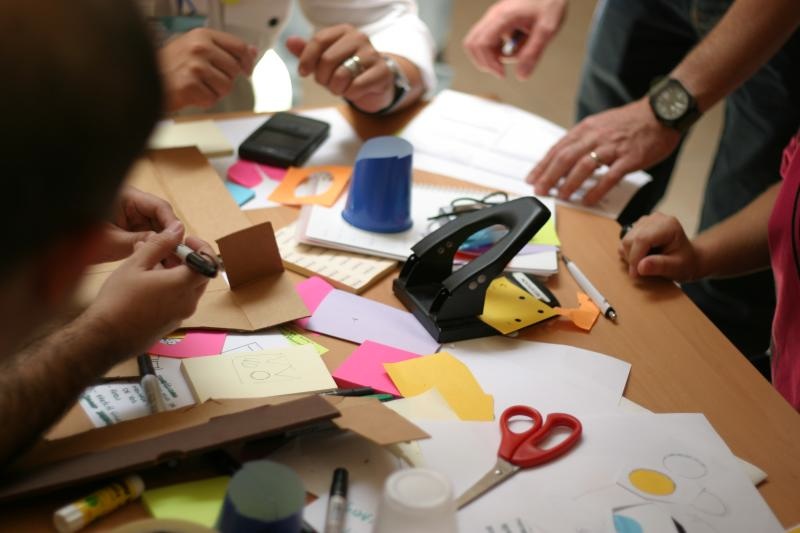Category: Design Research
Insights must incite. If a fantastic insight falls in the forest and no one hears it, is it still valuable?
What Design brings to research to make it more suitable for innovation is not better research methods.
The creative-thinking and rule-breaking of design does little to improve the reliability of research… what it does bring is a new perspective on the problem:
- Seek more interesting users (extreme people with strong ideas and opinions)
- Ask more surprising questions (to learn the unexpected)
- Look between the lines (discover the latent needs that describe opportunity areas)
- Focus on the future (forget describing what is currently happen, predict what logically comes next)
- Focus on what is actionable (forget describing the entire experience, illuminate what has potential)
- Deliver findings in a compelling way (use visuals to make insights more accessible)
- Design the experience of receiving the insights (no more PowerPoint– get your listeners involved)
I have been practicing Design Research for nearly ten years now, in various contexts. And a recent conference hosted by DMI helped me take a critical look at how I can improve my practice.
Roger Martin has contributed foundational work to the conversation of what Design Thinking is and why it is valuable. From his definition I am able to see that Design contributes two distinctly different benefits to problem-solving:
1. A new way of looking at the problem
2. Creative tools for finding solutions
To me, this breaks down into two steps– though for many people these may happen instantaneously. When I think about my own current work, conducting user-centered research to help inform the future of Communications products, I realize that I haven’t been pushing hard enough on the second point. I enjoy the process of developing insights. Insights are compelling and exciting, and it’s rewarding to read between the lines and discover new opportunities. But to fully participate in Design Thinking, I need to deliver insights together with possible solutions.
In my current project, I am not partnered with a Designer to help me find creative solutions. I choose not to look at this as a barrier, but as an opportunity to engage others in my mission to find new solutions. I see now, after listening to a series of Design Thinkers at the “Re-Thinking Design” conference, that I need to turn my glossy presentation of exciting insights into a working session that engages different teams in helping me to shape the final part of my presentation– together we can propose solutions that make the insights more compelling and real.

There is a complexity to systemic design challenges that is becoming clearer to me as we move through the hands-on phase of prototyping in context with nurses. The experience I am leading in this project has many experiences nested inside it. And it is useful to imagine how this project might be different if we realized the nestedness of these experiences in planning the phases.
Most of our energy, and the weight of the work, has been on “transforming” the 4 new hires within the client’s innovation group. This is a huge learning experience for them, and we wanted them to feel inspired and in-control of what they were learning, constructing the experience themselves. Which has, actually, made their experience rather self-centered–which is a wonderful way to be for people who are learning.
But the experience that is nested within their experience, is that of participatory design. The fundamental belief of the innovation group is that the ideas are developed by, with and for the end-user, in our case: the nurses. Which is a very un-self-centered approach. Egoless, even. And I think that we didn’t move into that mode of thinking soon enough. Now it is difficult for the team to give up their own needs for the needs of the nurses, and they continue to have the attitude of learners, without having the service mentality that comes with consulting and developing alongside the hospitals.
And to go one last step further, the ultimate experience that is nested within that participatory design process is that of the nurse in his or her daily work. The nurses are participating in designing something that will soon become a process that they need to follow as a requirement of their job. Thank goodness they have a chance to influence it and have their voices heard. But it needs to be more than a fun and engaging process. It requires them to think critically about what they can change and what they can sustain in their work.
So it seems that each of these experiences needs it’s own ground-rules and structure. And in thinking about a next project, it would interesting to try to identify all of them up front, and perhaps begin with the central experience as the starting point. Rather than working from the outside-in, as we have for this project.

Our team has been talking about the steps of turning concepts into prototypes, and prototypes into tangible ideas. One interesting problem, and one insight arose from the discussions.
First, as a team, we can conflate the two important questions that we have about our concepts, and it can confuse and complicate our user research on the hospital floor. As we seek to understand whether the idea we are exploring is worth pursuing, we need to understand two distinct questions:
– Is this concept worthwhile?
– How would it work?
When we take a prototype onto the hospital floor and we don’t know whether we are trying to understand whether nurses are enthusiastic about the idea, or if it would really he helpful or how the idea could be implemented on the floor, we have trouble asking the important questions and understanding exactly what we are learning from our time on the floor.
So we are making extra effort to make sure that we separate out those two purposes. Testing whether the concept is worthwhile is a combination of both direct questions to nurses about how interested they are in the solution, as well as prototype tests that have observable outcomes, such as fewer patient requests or longer conversations between nurses and patients.
“How would it work?” is more of an investigation question. It takes a lot of legwork to understand the logistics of how a concept can be implemented on the floor… who answers the phones at shift change? How do nurses find the phone numbers they need, etc. But then it needs to be followed up with prototype tests that prove or disprove the methods for making it work.

A new way of working for us.
We are working with an expert client, they have worked with our design firm for a long time. We helped them develop their own innovation process that they have used for years. As we train six new hires, I am finding that we are moving beyond out typical tool set for teaching clients to be human-centered designers. I want to branch into tools for Participatory Design, but we need to make them up as we go.
But it’s tricky. It’s a more difficult learning process to learn design and participatory engagement, because new designers most often want to hold on tightly to the process, not open it up for the unpredictability of people!
For our project, in particular, the finesse required to walk onto a hospital floor and ask a nurse to help solve a problem, is more difficult. It is easier to make a plan in the team room. Bring that plan to a nurse and say, “We’d like you to try X. And if you try X, Z might happen. We’d like to find out what would happen.”
The interaction is less predictable, less controlled, if you walk up to a nurse and say, “We have heard from nurses that Shift Change is stressful and chaotic. We would like to find out how Shift Change would be different if all of the patients were sitting up. Could you help us try this out? What do you imagine would happen?”
How might we help our clients trust the value of showing vulnerability to our users?
